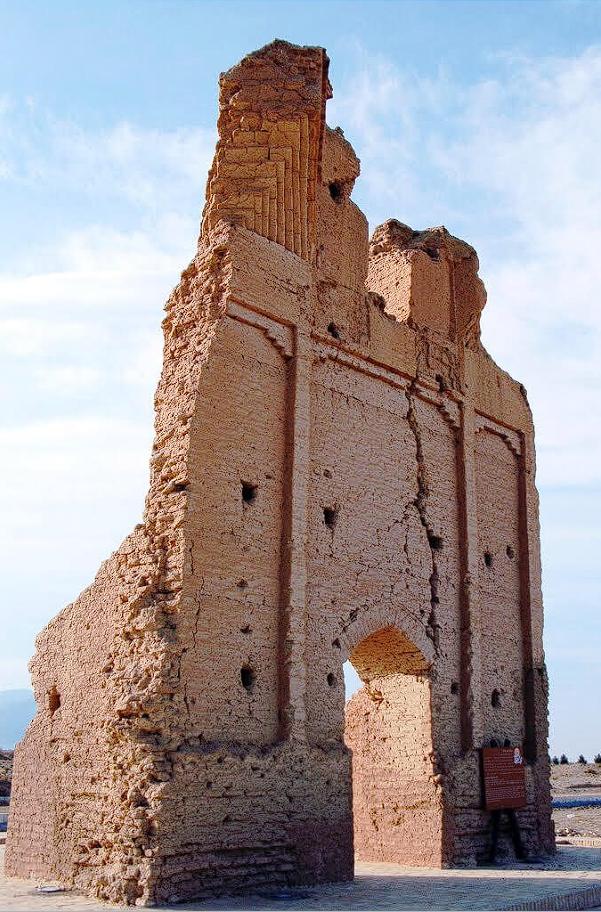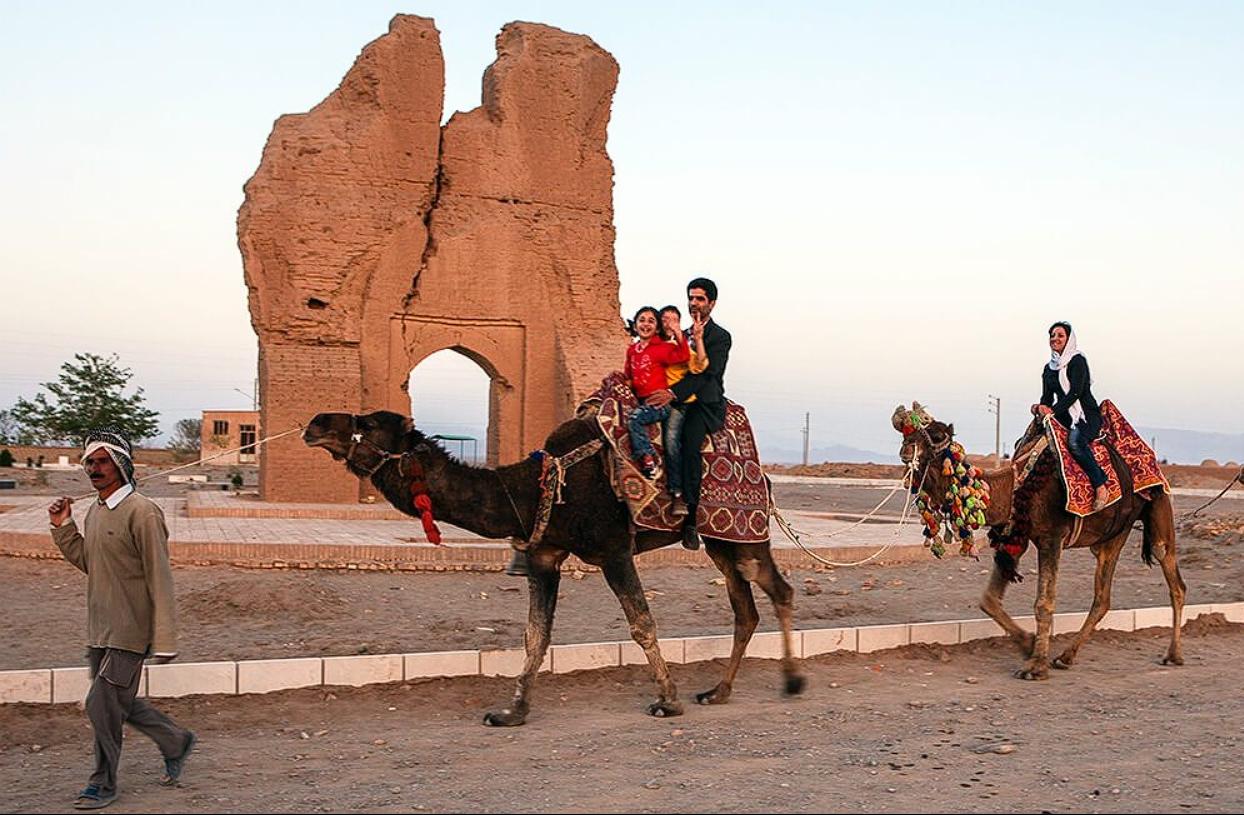The Farafar Gate, a solitary and enigmatic structure standing on the outskirts of Yazd, Iran, invites us to ponder its true origins and purpose. This ancient portal, shrouded in mystery and layered with history, serves as a compelling focal point where the past and present converge, blending myth and reality.
Unraveling the Gate’s Ancient Purpose:
The Farafar Gate’s true function remains a subject of debate, with various theories attempting to explain its existence.
A Gateway to a Lost City:
- Some historians believe the structure was once the entrance to an ancient city named Farafar, a settlement that flourished a millennium ago.
- This theory suggests the gate was a vital component of the city’s defenses or a symbolic entry point for travelers and traders.
- The theory of a lost city, adds a layer of mystery, and intrigue, to the gate.
A Relic of a Grand Mausoleum:
- Others argue that the gate was part of a larger domed mausoleum, built in the 16th century, serving as a gateway to a sacred burial site.
- The presence of a nearby graveyard lends credence to this theory, suggesting a funerary significance.
- The idea of a mausoleum, shows a more religious, and solemn, purpose.
An Unknown Function:

- The gate’s solitary nature and the lack of definitive historical records leave open the possibility of other interpretations.
- It might have served as a religious shrine, a boundary marker, or a ceremonial structure, its true purpose lost to time.
- The lack of information, makes the gate a blank canvas, for the imagination.
The Gate’s Modern Transformation:
In recent times, the Farafar Gate has taken on a new role, becoming a striking visual landmark that blends ancient and contemporary elements.
A Fusion of History and Myth:
- The modern sculpture of Arash the Archer, the legendary Persian hero, placed within the gate’s frame, creates a captivating juxtaposition of ancient and contemporary art.
- This fusion of history and mythology has transformed the site into a popular photography spot, attracting tourists and locals alike.
- The addition of the sculpture, gives the gate a new purpose, and a new meaning.
A Symbol of Yazd’s Rich Heritage:
- The Farafar Gate serves as a testament to Yazd’s rich and layered history, showcasing the city’s enduring connection to its past.
- It represents the city’s ability to preserve its historical heritage while embracing contemporary art and culture.
- The gate, is a symbol of Yazd’s historical depth.
A Cultural Crossroads:
- The site has become a cultural crossroads, where visitors can contemplate the mysteries of the past while appreciating the beauty of modern art.
- It highlights the enduring power of storytelling and the ability of art to bridge the gap between different eras.
- The gate, has become a meeting point, for different cultures.
The Enduring Mystery:
The Farafar Gate’s enigmatic nature continues to fascinate and intrigue, inviting speculation and debate.
A Call for Further Investigation:

- The lack of definitive historical evidence necessitates further archaeological and historical research to uncover the gate’s true origins and purpose.
- This ongoing investigation highlights the importance of preserving historical sites and artifacts for future generations.
- The mystery of the gate, calls for more research.
A Reflection of Yazd’s Resilience:
- The gate’s enduring presence, despite the passage of time and the shifting sands of history, reflects the resilience of Yazd and its people.
- It stands as a symbol of the city’s ability to withstand the forces of change and to preserve its cultural identity.
- The gate, stands as a monument to the people of Yazd.
An Invitation to Contemplate:
- The Farafar Gate invites us to contemplate the mysteries of the past and the enduring power of human creativity.
- It serves as a reminder of the vastness of history and the countless stories that remain untold.
- The gate, is an invitation, to explore the past.
The Farafar Gate, whether a forgotten city gate, a sacred tomb, or something else entirely, stands as a captivating enigma in the sands of Yazd. It serves as a reminder of the city’s rich and layered history, inviting us to ponder the mysteries of the past and the enduring power of human creativity.

CÁC TIN KHÁC
Mary Walton: The Forgotten Inventor Who Helped Clean Up America’s Cities
Tomb of Queen Nefertari in the Valley of the Queens, Egypt
Discover the Hypostyle Hall of the Temple of Hathor at Dendera
Venus de Losange: Unveiling the Mystery of a 20,000-Year-Old Paleolithic Icon